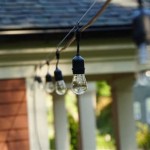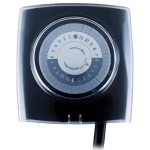Essential Aspects of Outdoor Photography Settings
Capturing stunning outdoor photographs requires careful attention to camera settings. By understanding the effects of each setting, you can unlock the full potential of your camera and create captivating images that reflect the beauty of the natural world.
Here are some essential aspects of outdoor photography settings to consider:
Aperture
Aperture refers to the opening of the lens that controls the amount of light entering the camera. It is measured in f-stops, with lower numbers indicating a wider aperture and larger opening. A wide aperture (e.g., f/2.8) creates a shallow depth of field, blurring the background and isolating the subject. Conversely, a narrow aperture (e.g., f/16) results in a deep depth of field, keeping both the subject and the background in focus.
Shutter Speed
Shutter speed determines the amount of time the camera's shutter remains open, controlling the amount of light reaching the sensor. Faster shutter speeds (e.g., 1/500s) freeze motion, while slower shutter speeds (e.g., 1/60s) allow for motion blur. When photographing moving subjects, such as wildlife or waterfalls, a faster shutter speed is necessary to capture sharp images.
ISO
ISO measures the camera's sensitivity to light. Higher ISO values (e.g., 800) amplify the signal from the sensor, allowing for photography in low-light conditions. However, higher ISO settings also introduce noise into the image, making it appear grainy. Lower ISO values (e.g., 100) produce cleaner images but require brighter lighting conditions.
White Balance
White balance controls the camera's interpretation of colors under different lighting conditions. It eliminates unwanted color casts and ensures that whites appear as neutral. Different presets are available for various lighting situations, such as daylight, shade, and tungsten light. In post-processing, you can also manually adjust the white balance to enhance the overall color accuracy.
Composition
While camera settings are crucial, composition is equally important in creating an impactful outdoor photograph. Elements such as the rule of thirds, leading lines, and negative space can help guide the viewer's eye and create a visually compelling image. Experiment with different angles, perspectives, and cropping techniques to achieve a unique and eye-catching composition.
Other Considerations
In addition to these core settings, there are several other factors to consider when shooting outdoors:
- Lens choice: The focal length of your lens affects the perspective and field of view. Wide-angle lenses capture a wider scene, while telephoto lenses bring distant subjects closer.
- Filters: Filters can enhance outdoor photographs by reducing glare, blocking out specific wavelengths of light, or creating special effects.
- Lighting: Understanding how natural light changes throughout the day can help you plan your outdoor photoshoot for optimal conditions.
Conclusion
Mastering the essential aspects of outdoor photography settings empowers you to capture the beauty of nature with clarity, creativity, and artistry. By experimenting with aperture, shutter speed, ISO, white balance, composition, and other factors, you can unlock the full potential of your camera and create captivating outdoor photographs that will leave a lasting impression.

Settings For Portraits Taken Indoors Outdoors

What Is The Best Setting For Outdoor Portraits With Examples Formed From Light

10 Settings And Equipment Tips For Portrait Photography

Settings For Portraits Taken Indoors Outdoors

10 Settings And Equipment Tips For Portrait Photography

Digital Photography Secrets Taking Great Outdoor Portraits For Dummies

Settings For Portraits Taken Indoors Outdoors

Settings For Portraits Indoor Outdoor Group Photoshoot Photography Portrait Tips

Settings For Outdoor Portrait Photography Perfect Exposure Every Time

The Best Settings For Outdoor Photography In Depth
Related Posts







